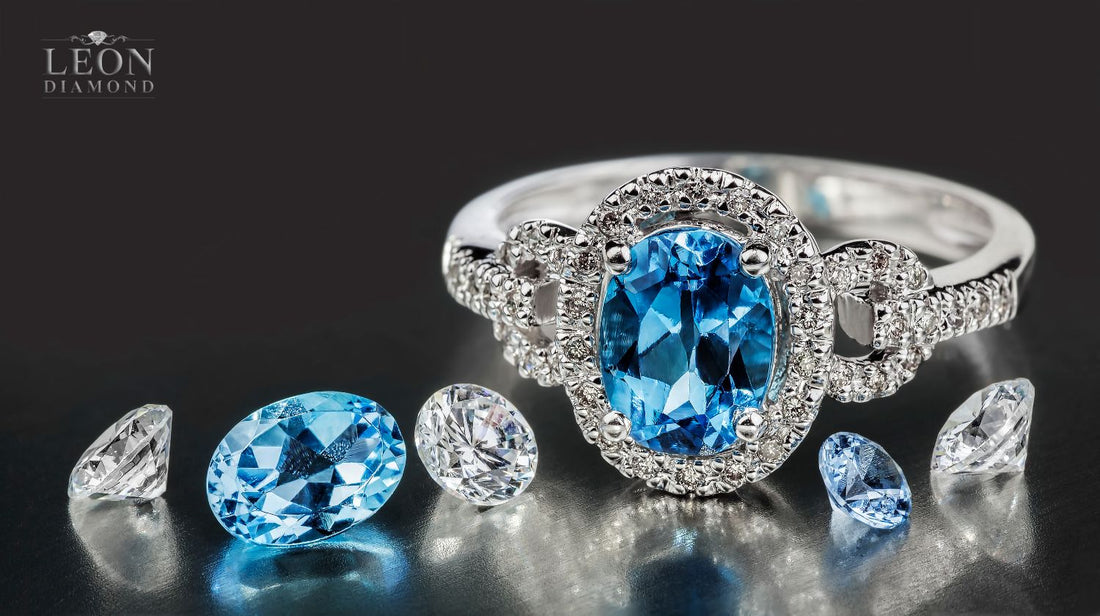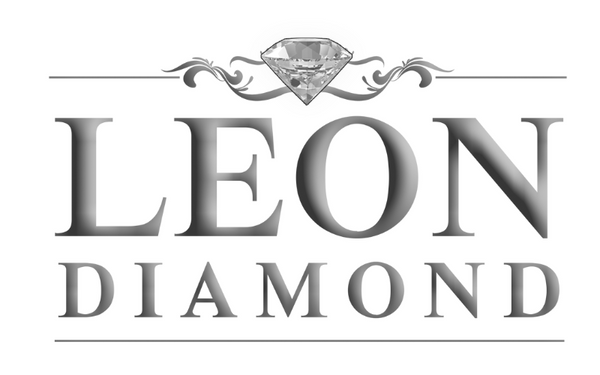
Never Lose a Diamond Again: Expert Tips to Protect Your Gem
Share
Diamonds are among the hardest natural substances, but their settings can weaken over time, increasing the risk of loss. Loose prongs, improper storage, and daily wear make diamond jewelry vulnerable to slipping off unnoticed. Many people only realize their stone is missing after it’s too late to recover.
A well-secured diamond lasts a lifetime. Choosing the right setting, handling jewelry correctly, and performing regular inspections significantly reduce the chances of losing your gemstone. Implementing these protective measures ensures your diamond remains safe and secure.
By selecting secure settings, routinely checking for looseness, and following best storage practices, you can keep your diamond jewelry intact for years. Jewelers recommend biannual inspections to detect early signs of wear and ensure your diamonds stay firmly in place.
Why Diamonds Get Lost: Common Causes
Diamonds often get lost due to loose settings, physical activities, and improper storage. Understanding these risks helps prevent accidental loss.
Loose Settings and Worn-Out Prongs
- Over time, prongs weaken and metal wears down, making it easier for diamonds to fall out.
- Frequent wear, especially in rings, loosens the setting, increasing the risk of stone displacement.
Slipping Off During Daily Activities
- Rings can slide off when hands are wet, cold, or exposed to lotions and oils.
- Necklaces and bracelets with weak clasps may unhook and fall without notice.
Misplacing Jewelry Due to Improper Storage
- Placing jewelry loosely in drawers or bags increases the chance of losing small stones.
- Storing diamonds with other pieces can lead to scratches or tangled chains that loosen settings.
Choosing the Right Setting to Keep Your Diamond Secure

The right setting plays a crucial role in preventing diamond loss. Some settings offer better security than others, especially for rings, necklaces, and bracelets.
The Safest Settings for Rings, Necklaces, and Bracelets
- Bezel Setting – Encircles the diamond completely with metal, offering maximum protection.
- Channel Setting – Holds multiple diamonds between two strips of metal, keeping them securely in place.
- Flush Setting – Embeds the diamond within the metal surface, reducing the risk of snagging or loosening.
Why Bezel and Channel Settings Offer Better Security Than Prong Settings
While prong settings showcase more of the diamond, they are prone to bending and loosening over time. In contrast, bezel and channel settings provide full or partial metal coverage, ensuring the stone remains firmly secured.
How to Check If Your Diamond Is Loose
Performing regular checks at home can prevent stone loss before it happens. If you notice movement or hear rattling, seek professional tightening immediately.
Simple Home Tests to Check for Loose Stones
- The Tap Test – Gently tap the diamond with a soft object (like a toothpick). If it shifts, it may be loose.
- The Wiggle Test – Hold the ring near your ear and lightly wiggle the stone; any sound indicates movement.
- The Light Reflection Test – A loose diamond may sit unevenly, affecting how it reflects light.
Signs That Your Diamond Needs Professional Tightening
- Movement inside the setting when touched.
- A visible gap between the diamond and its prongs.
- Unusual sounds when tapping the ring against a soft surface.
Best Habits to Prevent Losing a Diamond
Developing safe and valuable jewelry habits helps minimize wear and tear, keeping your diamonds secure for years.
When to Remove Your Jewelry to Avoid Damage
- Before Swimming – Chlorine weakens metal settings, and cold water shrinks fingers, increasing the risk of rings slipping off.
- During Exercise – Impact and friction from weights or machines can loosen prongs.
- While Cleaning or Cooking – Harsh chemicals and grease buildup can degrade metal and weaken clasps.
How to Handle Your Diamond Ring Safely During Everyday Wear
- Avoid touching the diamond directly – Natural oils from your fingers can make it slippery.
- Inspect your ring weekly – Check for prong movement or visible gaps.
- Store it in a designated jewelry box – A velvet-lined case prevents scratching and reduces the risk of misplacement.
- The Role of Routine Inspections in Diamond Safety
Regular inspections are essential for maintaining the security of your diamond jewelry. Over time, prongs wear down, metal settings weaken, and clasps loosen, increasing the risk of losing a stone.
Why are Regular Inspections needed?
- Daily wear causes gradual metal fatigue, making prongs more vulnerable to bending or breaking.
- Small movements in the setting can go unnoticed, but a jeweler can identify potential risks before a diamond becomes loose.
- Detecting hidden damage early prevents costly repairs and ensures long-term durability.
How Often You Should Get Your Jewelry Checked by a Jeweler
- Every six months – A routine inspection ensures settings remain secure.
- Before and after major events – Trips, weddings, or intensive activities may increase wear and tear.
- If you notice movement or unusual sounds – Any shifting or rattling should be checked immediately.
Proper Storage Solutions to Protect Your Diamonds

Correct storage prevents scratches, tangling, and accidental loss, keeping your diamond jewelry in pristine condition.
Why Storing Diamonds Separately Prevents Scratches
Diamonds can scratch other gemstones and metals, especially when stored together. Keeping them in separate compartments ensures they remain undamaged.
Best Jewelry Storage Solutions
- Soft Pouches – Ideal for temporary storage, keeping each piece isolated.
- Velvet-Lined Boxes – Provide cushioned compartments to prevent movement and friction.
- Jewelry Organizers with Dividers – Prevents rings, bracelets, and necklaces from rubbing against each other.
How to Keep Your Diamond Safe While Traveling
Traveling with diamond jewelry requires secure storage and mindful packing to prevent loss or damage.
Best Travel Cases for Diamond Jewelry Protection
- Hardshell Jewelry Cases – Protect against impact and keep pieces organized.
- Anti-Tarnish Pouches – Prevent discoloration in gold and platinum settings.
- Compact Jewelry Rolls – Offer padded compartments for easy access and safe storage.
Why You Should Never Pack Fine Jewelry in Checked Luggage?
- Risk of theft or misplacement – Airlines are not responsible for lost valuables in checked baggage.
- Exposure to extreme temperatures and pressure changes – Can weaken metal settings.
- Lack of security – Carrying jewelry in your personal bag ensures constant supervision.
Insuring Your Diamond Jewelry: Is It Worth It?
Jewelry insurance provides financial protection against loss, theft, and accidental damage, ensuring peace of mind.
How does Jewelry Insurance protect against Loss, Theft, and Damage?
- Covers replacement costs if a diamond is lost or stolen.
- Pays for repairs if prongs loosen or stones are damaged.
- Provides worldwide coverage for travelers wearing high-value jewelry.
The Best Insurance Options for Diamond Rings and Other Valuables
- Standalone Jewelry Insurance – Specialized policies through companies like Jewelers Mutual offer full coverage.
- Homeowner’s or Renter’s Insurance Riders – Can extend coverage to valuable jewelry.
- Appraisal-Based Policies – Ensure accurate valuation and reimbursement in case of loss.
What to Do If You Lose a Diamond

Losing a diamond can be stressful, but quick action increases the chances of recovery or replacement.
Steps to Take Immediately After Noticing a Missing Stone
- Retrace your steps – Check clothing, bags, and recently visited areas.
- Search in well-lit conditions – Diamonds reflect light, making them easier to spot under a flashlight.
- Inspect the setting – If part of the stone remains, a jeweler may be able to secure it.
How Jewelers Can Replace Lost Diamonds in Engagement Rings and Other Jewelry
- Custom Replacement – Jewelers match new diamonds to the original in size, cut, and clarity.
- Resetting Options – If the setting is damaged, upgrading to a more secure setting may be necessary.
- Insurance Claims – If insured, policies often cover replacements based on appraised value.
Special Care for Loose Diamonds and Custom Pieces
Loose diamonds and custom jewelry require extra precautions to prevent damage, misplacement, or theft. Proper storage and handling ensure their safety.
How to Safely Store and Transport Loose Diamonds
- Use Gemstone Papers – Professional jewelers wrap loose diamonds in soft, non-abrasive papers to protect them.
- Store in a Secure Box – A small, padded jewelry box with individual compartments prevents movement and scratches.
- Avoid Handling with Bare Hands – Skin oils can leave residue, making the diamond slippery and harder to handle.
Precautions for Custom and Vintage Jewelry
- Secure the Setting Regularly – Older or custom-made settings may be weaker than modern designs and require frequent inspections.
- Use Protective Cases – Vintage pieces should be stored in velvet-lined boxes to prevent prongs from bending.
- Avoid Wearing Fragile Pieces Daily – Antique jewelry is often more delicate and should be worn occasionally to reduce wear and tear.
Can Lab-Grown Diamonds Be Lost as Easily as Natural Diamonds?
Lab-grown diamonds share the same physical and structural properties as natural diamonds, meaning they can be lost under similar circumstances.
Are Lab-Grown Diamonds More or Less Prone to Getting Lost?
- Equally Prone to Loss – The risk depends on the setting and jewelry care, not whether the diamond is lab-grown or natural.
- Loose Prongs and Worn-Out Settings – Over time, metal fatigue can loosen any diamond, regardless of origin.
How the Value Difference Impacts Insurance and Replacement Options
- Lower Replacement Costs – Lab-grown diamonds cost significantly less than natural diamonds, making replacement more affordable.
- Insurance Considerations – Some policies differentiate between lab-grown and natural diamonds, so verifying coverage terms is essential.
The Truth About Losing Diamonds
Many misconceptions exist about diamond security. Understanding how diamonds can loosen or fall out helps you take the right precautions.
Myth: "Diamonds Can’t Fall Out If the Prongs Are Strong."
Truth: Prongs weaken over time due to daily wear and metal fatigue. Even a secure setting can become loose if not inspected regularly.
Myth: "Larger Diamonds Are Harder to Lose."
Truth: Heavier diamonds put more pressure on their settings, making them more likely to loosen and fall out over time.
Myth: "A Ring That Fits Well Won’t Slip Off."
Truth: Temperature changes and moisture can cause fingers to shrink, making rings looser and increasing the risk of loss.
Myth: "Only Old Jewelry Loses Stones."
Truth: Even brand-new settings can fail if not properly maintained. Regular inspections help catch weak prongs before they cause diamond loss.
Taking preventative steps, such as routine checks and secure storage, ensures your diamonds remain safe and intact.
What Should You Do Now?
- Schedule regular professional inspections to detect loose settings early.
- Store diamonds separately to prevent scratches and damage.
- Consider jewelry insurance to protect against loss or theft.
Protect Your Gem With Expert Tips

Securing your diamond jewelry requires proper settings, routine inspections, and careful handling. Loose prongs, weak clasps, and improper storage are the main reasons diamonds get lost.
At Leon Diamond, we offer annual in-store cleaning and inspection services to help keep your diamonds secure. Visit us for a professional checkup and ensure your jewelry remains safe and stunning for years to come!
